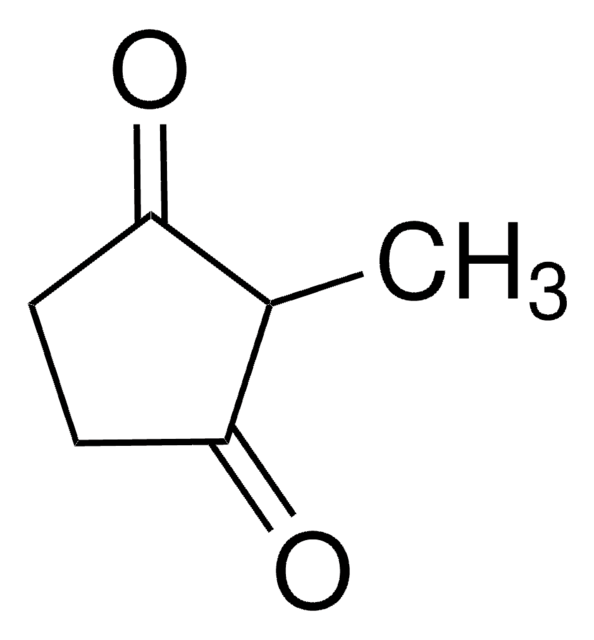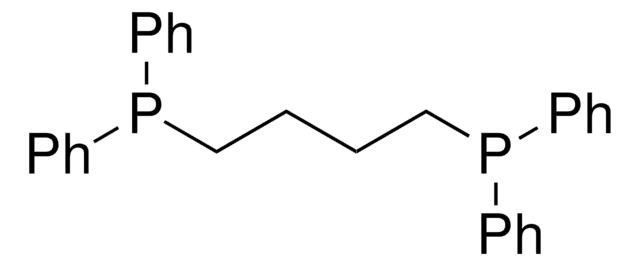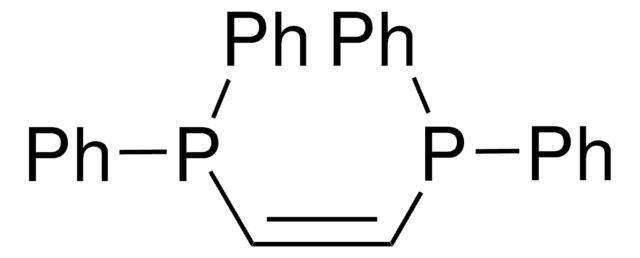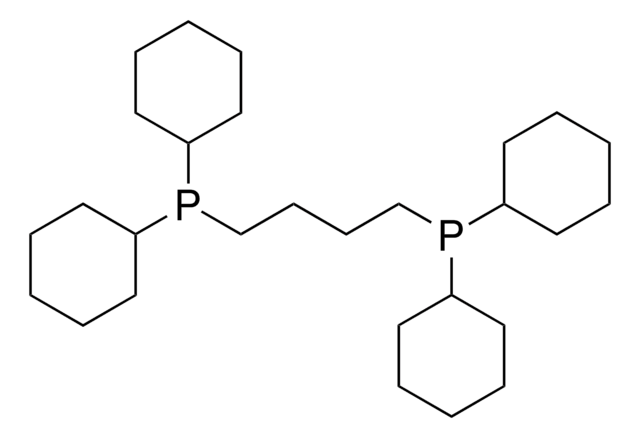127566
Bis(diphenylphosphino)methane
97%
Sinónimos:
DPPM, Methanediylbis[diphenylphosphine, Tetraphenylmethylenediphosphine, DPM, Methylenebis(diphenylphosphine)
About This Item
Productos recomendados
Análisis
97%
formulario
solid
idoneidad de la reacción
reagent type: ligand
reaction type: Heck Reaction
reagent type: ligand
reaction type: Suzuki-Miyaura Coupling
mp
118-119 °C (lit.)
grupo funcional
phosphine
cadena SMILES
C(P(c1ccccc1)c2ccccc2)P(c3ccccc3)c4ccccc4
InChI
1S/C25H22P2/c1-5-13-22(14-6-1)26(23-15-7-2-8-16-23)21-27(24-17-9-3-10-18-24)25-19-11-4-12-20-25/h1-20H,21H2
Clave InChI
XGCDBGRZEKYHNV-UHFFFAOYSA-N
¿Está buscando productos similares? Visita Guía de comparación de productos
Categorías relacionadas
Código de clase de almacenamiento
11 - Combustible Solids
Clase de riesgo para el agua (WGK)
WGK 3
Punto de inflamabilidad (°F)
Not applicable
Punto de inflamabilidad (°C)
Not applicable
Equipo de protección personal
Eyeshields, Gloves, type N95 (US)
Certificados de análisis (COA)
Busque Certificados de análisis (COA) introduciendo el número de lote del producto. Los números de lote se encuentran en la etiqueta del producto después de las palabras «Lot» o «Batch»
¿Ya tiene este producto?
Encuentre la documentación para los productos que ha comprado recientemente en la Biblioteca de documentos.
Los clientes también vieron
Nuestro equipo de científicos tiene experiencia en todas las áreas de investigación: Ciencias de la vida, Ciencia de los materiales, Síntesis química, Cromatografía, Analítica y muchas otras.
Póngase en contacto con el Servicio técnico










